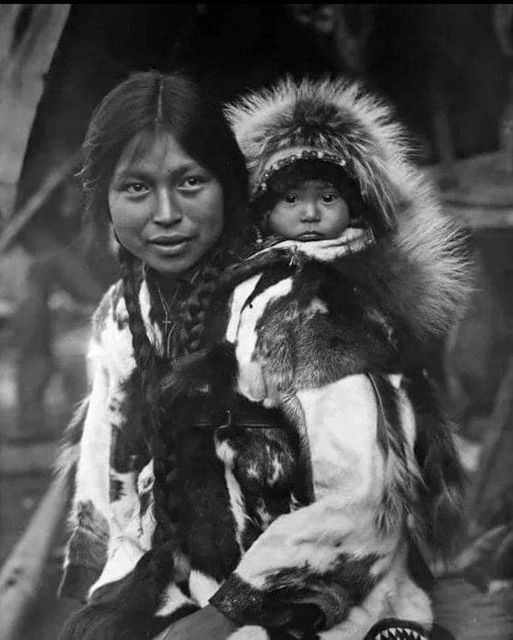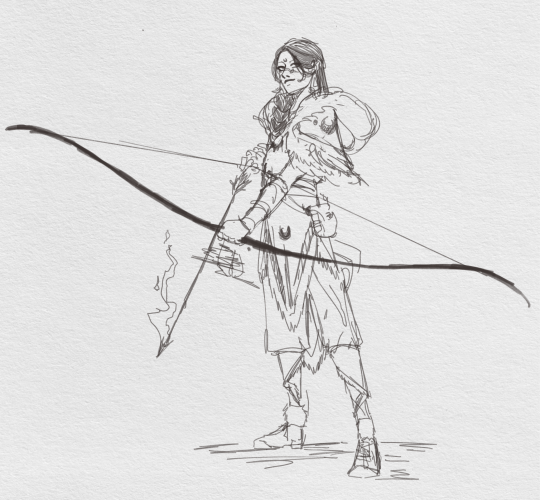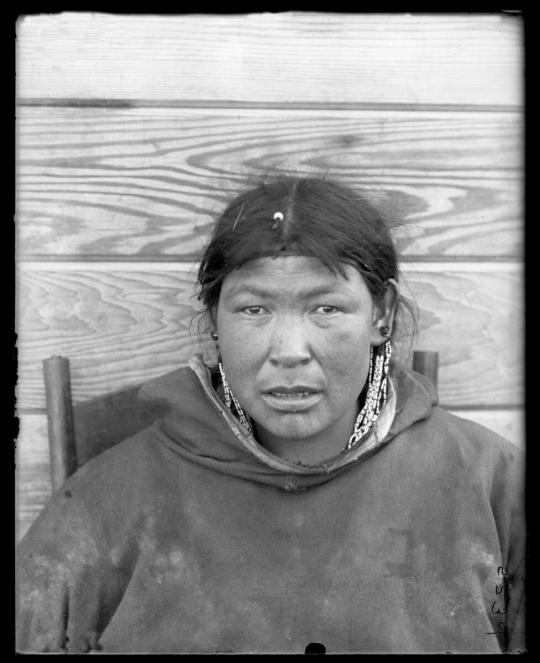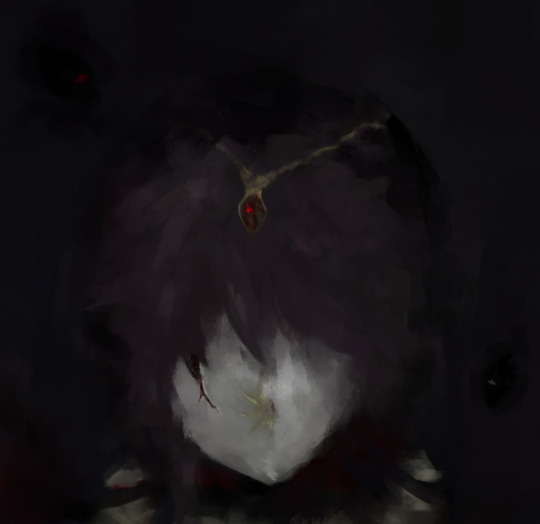#Yupik
Photo

Asian/Siberian Yupik settlements in Russia and the USA
64 notes
·
View notes
Text

Snow goggles of the Inuit and Yupik peoples, Arctic region.
506 notes
·
View notes
Text

Yup'ik dancer, Alaska, by Zeke Tucker
#yupik#alaska#america#north america#folk clothing#traditional clothing#traditional fashion#cultural clothing
492 notes
·
View notes
Text

Google sources:
The word Eskimo is an offensive term that has been used historically to describe the Inuit throughout their homeland, Inuit Nunangat, in the arctic regions of Alaska, Greenland and Canada, as well as the Yupik of Alaska and northeastern Russia, and the Inupiat of Alaska.
Strictly speaking, eskimos can also be regarded as native Americans, because what western people call ‘eskimos’ are actually the indigenous people inhabiting parts of the northern circumpolar region ranging from Siberia to parts of the Americas (Alaska and Canada). The native people of the northern polarcircle do not actually call themselves ‘Eskimos’; this is a term given to them by European settlers. The term Eskimo is regarded by many as a derogative term because it is used to describe a very large group of people with different traits and languages. Furthermore, if translated into Alonquin laguage (spoken by indigenous people in Ontario and Quebec, Canada), ‘Eskimo’ means: ‘eaters of raw meat’. Obviously, eating raw meat is not the one thing that defines the Inuit people of Canada, or ‘Inuk’ if referring to a single person of Inuit descent.
Francis Carpenter, Our Little Friends of Eskimo Land: Papik and Natsek, 1932
#vintage#1932#children's lit#book#technology#inuit#yupik#inupiat#a Yupik woman explained it to me in 2013
59 notes
·
View notes
Text
BREAKING NEWS: Mary Peltola beats Sarah Palin!
"Democrat Mary Peltola won the special election for Alaska’s only U.S. House seat on Wednesday, besting a field that included Republican Sarah Palin, who was seeking a political comeback in the state where she was once governor.
Peltola, who is Yup’ik and turned 49 on Wednesday, will become the first Alaska Native to serve in the House and the first woman to hold the seat. She will serve the remaining months of the late Republican U.S. Rep. Don Young’s term. Young held the seat for 49 years before his death in March.
Peltola’s victory, coming in Alaska’s first statewide ranked choice voting election, is a boon for Democrats, particularly coming off better-than-expected performances in special elections around the country this year following the Supreme Court’s overturning of Roe v. Wade. "
Read the full piece here: https://www.oregonlive.com/nation/2022/09/sarah-palin-loses-alaska-special-election-to-democrat-mary-peltola.html
370 notes
·
View notes
Photo

93 notes
·
View notes
Text

A Little Guy on a Yup'ik harpoon line, c1885-1930!
Little Guy rating: 10/10
Notes: ivory little guy! probably a seal!
#alittleguyaday#ivory carving#yup'ik#first nations#yupik#first nations art#sorry for the absence i was up a mountain#seal
14 notes
·
View notes
Photo

Vladimir Bogoraz • Siberian Yupik woman tattooing • Chukotka, 1901
234 notes
·
View notes
Text

Quick sketch of Ikumak <3 I'm going to be drawing Kalea next!!
Ikumak's design and the culture he's from feeds a lot of inspiration from Yupik and Inuit cultures, but also feeds a little bit from other canadian tribes like Ojibwe, at least when it comes to the stories meant to originate from his home, Astivia, since Astivia is made up of 5 major groups rather than just one large group.
#art#artist#my art#artists on tumblr#artwork#digital art#tuktulok#inuit fantasy#inuit art#inuit#yupik fantasy#yupik#indigenous fantasy#native fantasy#fantasy
8 notes
·
View notes
Text
Keeping Alaska Native languages alive: Interview with Dr. X̱ʼunei Lance Twitchell
33 notes
·
View notes
Text
Content Warning: Blood, Unsettling imagery

Another painting! This time of the Yup'ik monster Amixsak! These creatures are born from walrus carcasses who are not given fresh water to drink, food, and are disected after being hunted for food. These leftover walrus carcasses will return as vengeful and angry walrus husks called Amixsak :]
#amixsak#yupik#yupik folklore#yupik monsters#alaska#alaskan folklore#art#digital art#artist#cryptid#cryptozoology#cryptid art#folklore art#folklore#digital painting#alaska native folklore
12 notes
·
View notes
Text
youtube
I build with Royal StarAllah about getting Knowledge Of Self in Alaska, Alaskan Land Rights For Natives, Hunger Strikes, Bob Marley Movie, Western Imperialism and Much More. For the full build hit the link in the bio or the comments underneath. Like, Subscribe and Share. Peace!
#nation of gods and earths#supreme mathematics#five percent nation#allah school in mecca#hip hop#5% nation of gods and earths#black women#father allah#black men#black people#alaska#alaska natives#inupiat#yupik#american indian#indigenous#black power#Youtube
4 notes
·
View notes
Text
Masque de l'esprit de la lune (Musée du Quai Branly, Paris)

Les masques (kegginaqut)sont porteurs d’une vision ou d’un rêve d’un chamane. Ils étaient fabriqués, souvent par paire, en vue d’être associés à un récit accompagné par des chants et des danses aux tambours lors de cérémonies saisonnières. Ils rendaient visibles, le temps d’une cérémonie, les voyages intérieurs de l’angalkuq (chamane), intercesseur entre le monde des esprits, des animaux et des défunts. Les cérémonies avaient lieu principalement durant l’hiver dans le qasgiq, une vaste maison collective semi-souterraine réservée aux hommes, dans laquelle les femmes n’étaient admises qu’à titre exceptionnel.
Le masque dit « de l’esprit de la Lune » couvrait complètement le visage de celui qui le portait. Il fut très certainement utilisé par un angalkuq durant une cérémonie collective destinée à favoriser de futures chasses. On reconnaît en son centre la face d’un tuunraq, entité que les Yupiit associaient à l’astre lunaire, surmontant un carnivore, certainement un chien. Cet esprit de la Lune est probablement une version locale de l’homme de la Lune, bien connu des Inuit, que le chamane avait l’habitude de solliciter en vue d’obtenir de lui que le gibier s’offre aux chasseurs (Nelson 1899 : 515). Les nombreuses mains aux pouces coupés attestent la grande puissance de cet esprit. L’appendice inférieur représentant des bulles d’air indique la présence du phoque avant qu’il n’émerge de l’eau et, symboliquement, le passage d’un monde à l’autre des animaux et des êtres humains (Fienup-Riordan 1994).
Notice du musée: Le masque est à fond plat avec trois éléments de bois assemblés. Les couleurs du masque sont symboliques : le jour est représenté par le blanc, la nuit par le noir et la terre par l’ocre. Au centre émerge un visage mi-homme, mi-phoque surmontant la gueule d’un chien. Les mains qui l’encadre n’ont que quatre doigts, les pouces ont été enlevés afin que les esprits ne puissent attraper les hommes avec leur pouce. Les rondelles de bois sur la tige recourbée à l’avant du masque figurent les bulles d’air signalant la présence du phoque sous la glace, et symbolisent également aussi les strates du cosmos qui sépare le monde des esprits de celui des hommes. L’arc au-dessus de la tête est pour le chamane le point de passage vers le monde des esprits et les plumes figurent des étoiles.
Sources:
GUIGON Gwénaële et MAUEZ Marie, L'art yup'ik au musée du quai Branly, Trois masques de la collection Robert Lebel. https://journals.openedition.org/gradhiva/1125
Collection du musée: https://www.quaibranly.fr/fr/explorer-les-collections/base/Work/action/show/notice/371715-masque-ceremoniel-kegginaquq-dit-lesprit-de-la-lune
2 notes
·
View notes
Photo

Drew Michael — Brown Angel (basswood, myrtle wood, vintage pony hide, poly fabric, wire, beads, feathers, caribou hair, acrylic, copper wire, metal tacks, rabbit fur, air system ball joints, nails, screws, and oak wood, 2020)
105 notes
·
View notes
Text

Yupik woman, Siberia, 1901
Bogoras, Waldemar (Photographer)

Yupik woman with beaded earrings
Bogoras, Waldemar (Photographer)

Yupik woman, Siberia, 1901
Bogoras, Waldemar (Photographer)

Yupik woman, Siberia, 1901
Bogoras, Waldemar (Photographer)
#non-russian#indigenous russia#indigenous russian#siberian people#Yupik#Юпик#Yupik culture#Культура Юпик
15 notes
·
View notes
